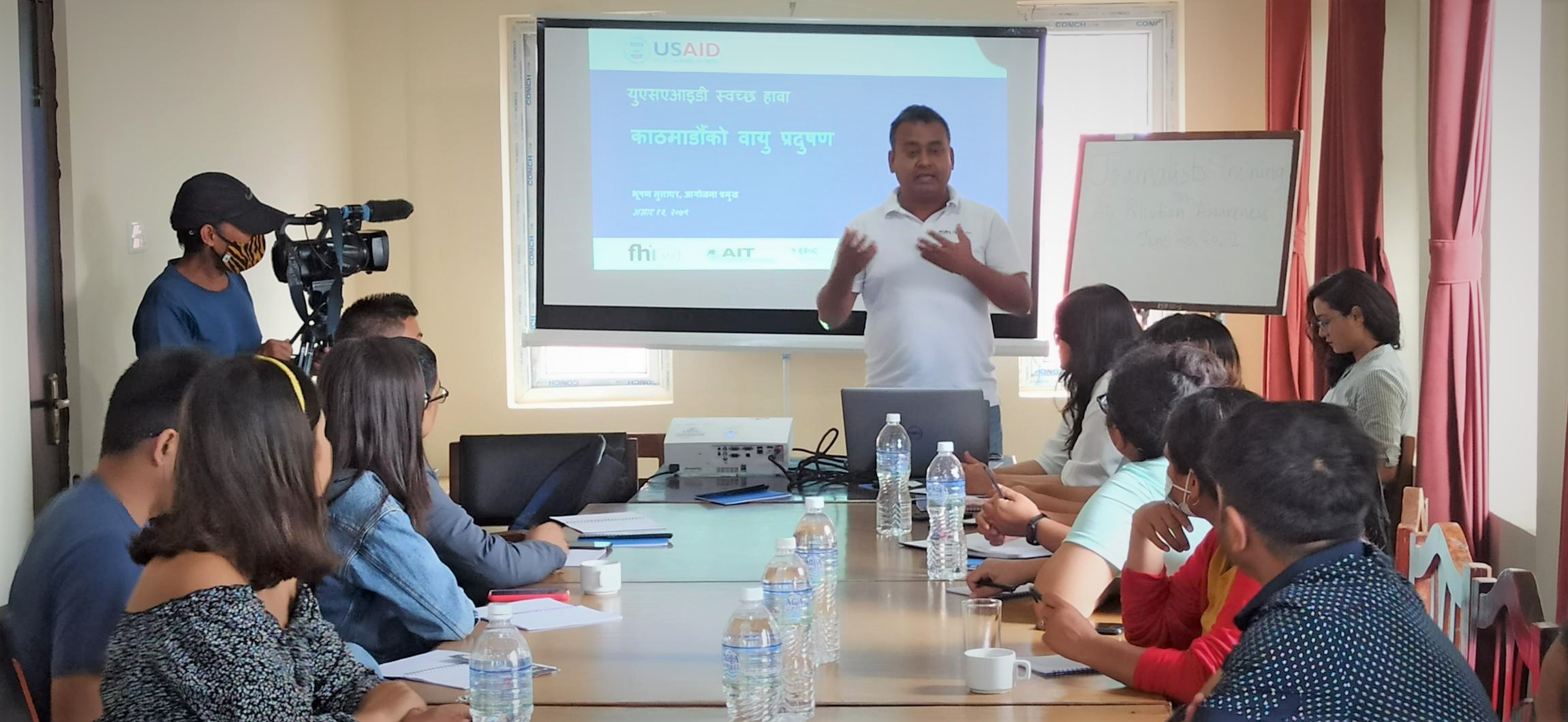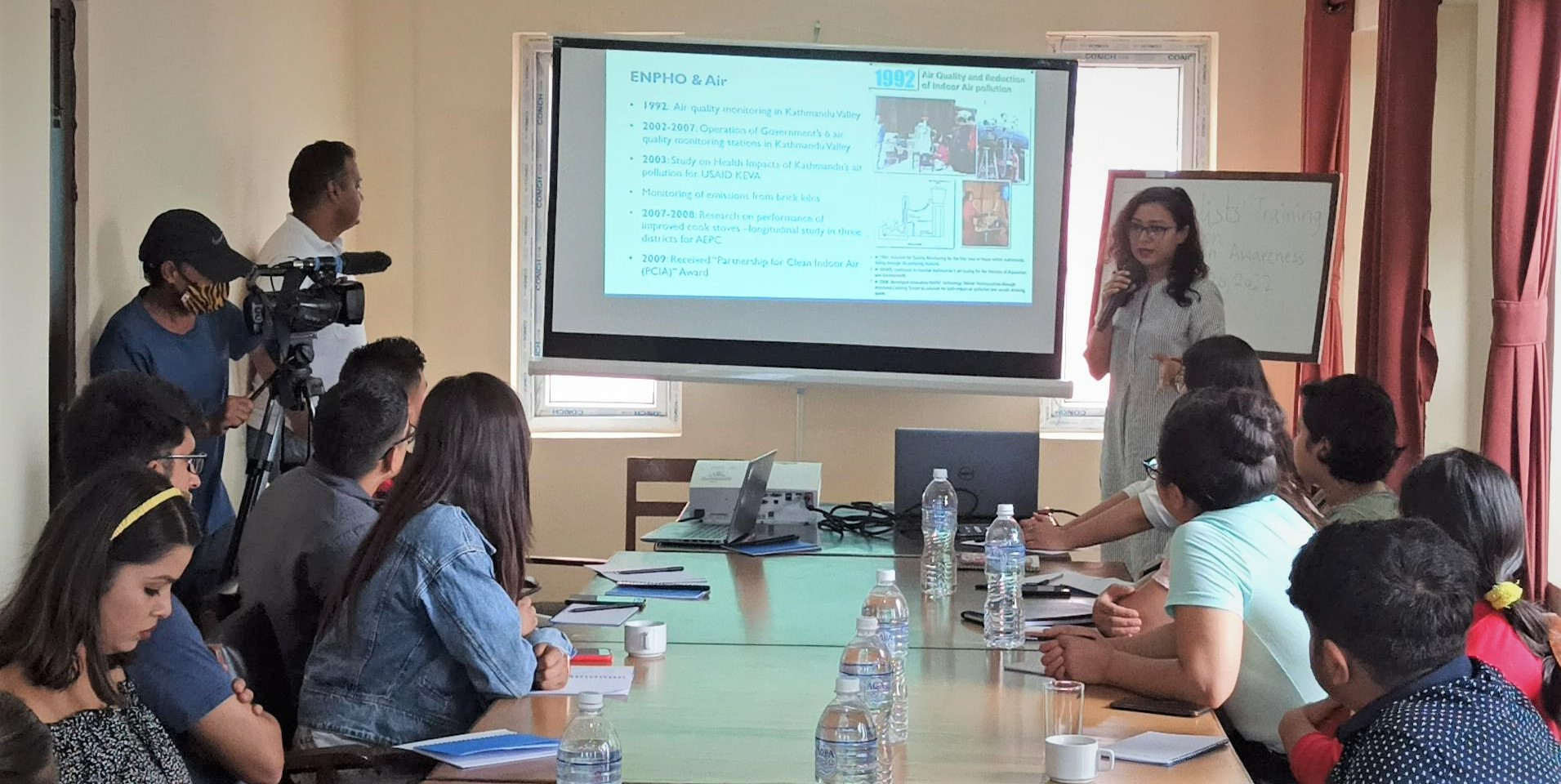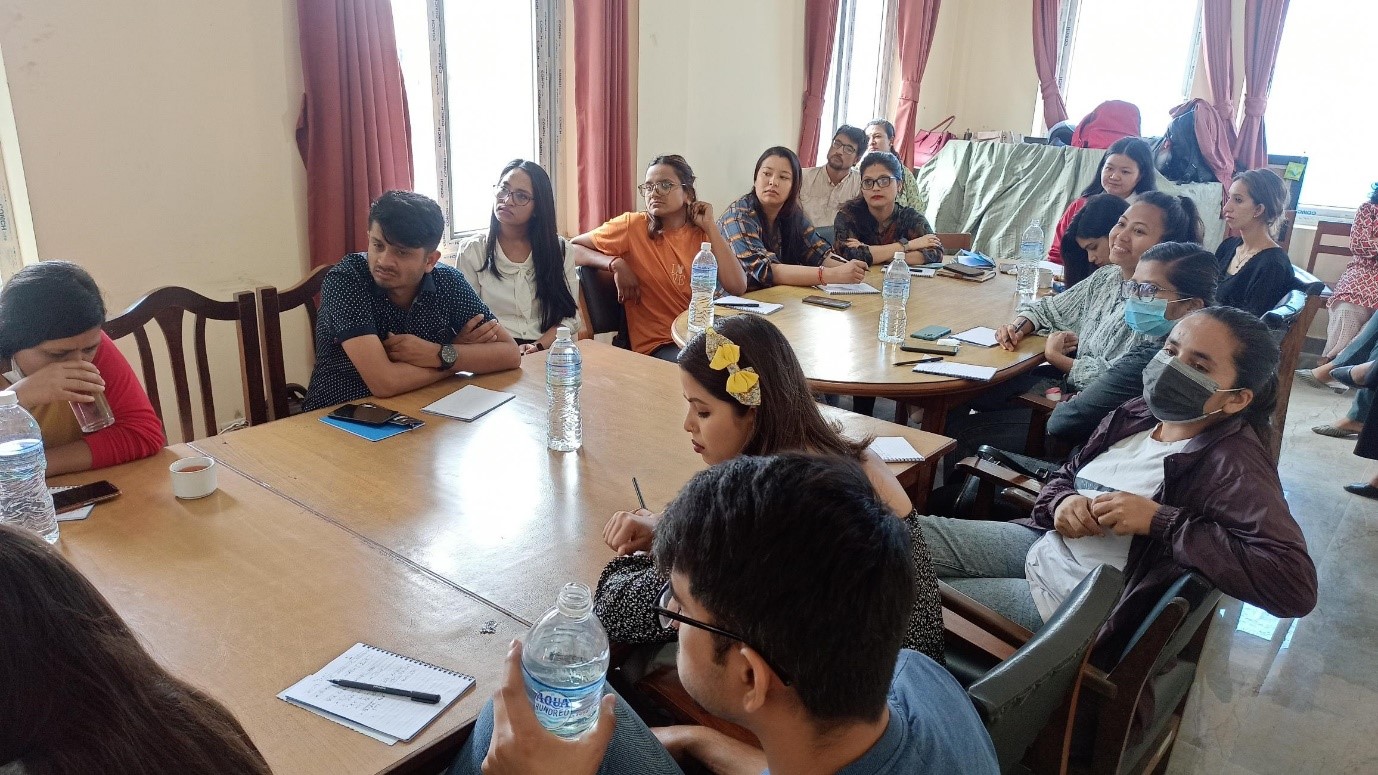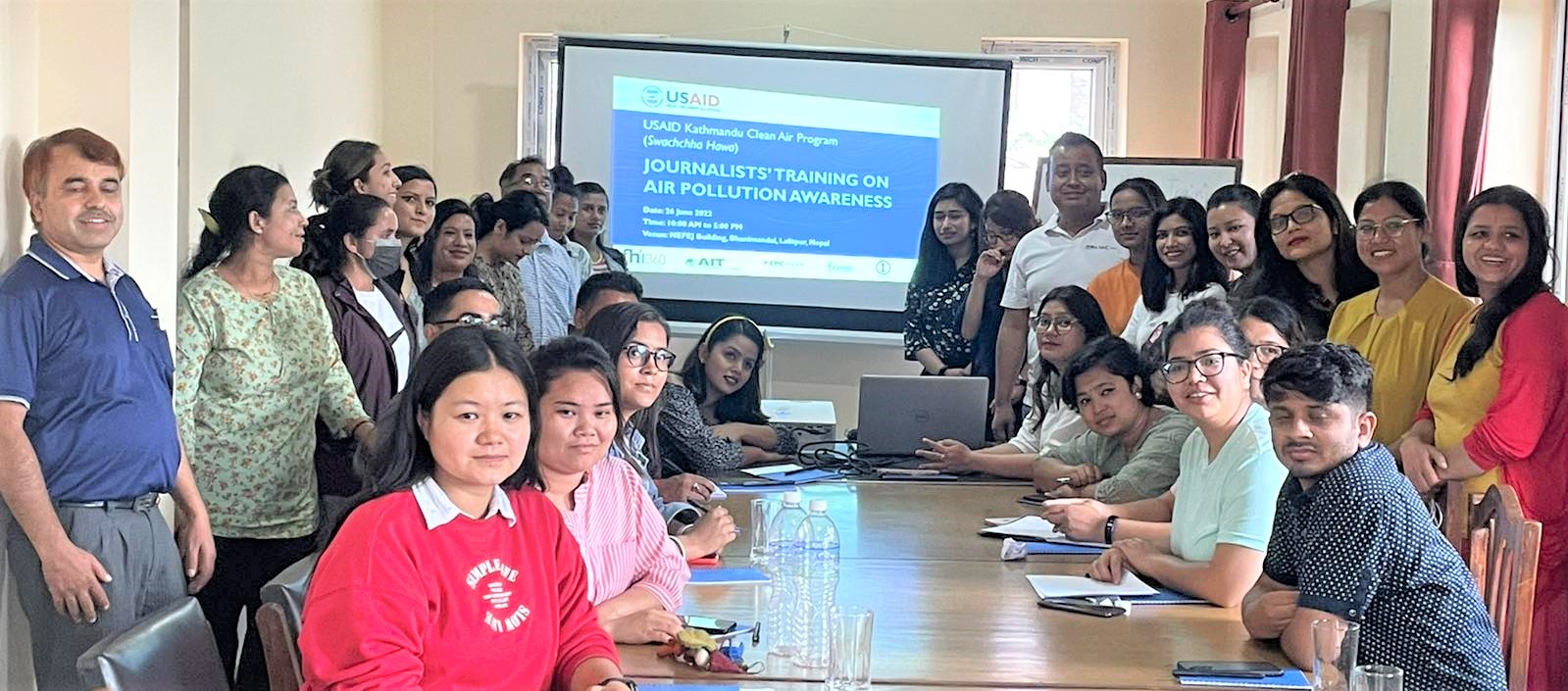Air quality in Nepal is a public health crisis, particularly in Kathmandu Valley. WHO data indicate that the annual mean concentration of particulate matter in Kathmandu is ten times higher than WHO’s health guidelines. Air sources, primarily driven by transport and vehicle emissions, waste burning, road and construction dust, brick kilns, and crop clearing are known and measurable. Data from Nepal suggest that the public health impact of air pollution is substantial including increased rates of lung cancer and chronic respiratory illness. The State of Global Air 2020 estimates that air pollution resulted in 42,100 deaths in Nepal in 2019 which is greater than the 2015 earthquake.
‘USAID Kathmandu Clean Air Program (Swachchha Hawa)’ comes in as an opportunity to improve the air quality in the Kathmandu Valley approaching national ambient air quality standards leading to improved health and educational outcomes. ENPHO along with its consortium members (FHI360, Asian Institute of Technology, Energy Policy Institute at University of Chicago (EPIC) –India, and One to Watch Pvt. Ltd) is working towards improving air quality in the Kathmandu Valley to approach the national ambient air quality standards leading to improved health and educational outcomes.
To achieve this goal Swachchha Hawa has the following three major objectives
• Improve the Government of Nepal (GoN) capacity at all levels and willingness to drive evidence-based policy formulation, enforcement, and implementation that influences air quality.
• Improve civil society and citizen engagement and knowledge on air pollution issues to advance public interest and GoN and private sector accountability for improving air quality.
• Enhance private sector involvement and investment in addressing air pollution issues.

In this regard, ENPHO in collaboration with Nepal Forum of Environmental Journalists (NEFEJ) organized one day training for Journalists on ‘Air Pollution Awareness’ on June 26, 2022 at NEFEJ Building. The main objective of the training was to increase local journalists’ capacity to comprehend issues related to air pollution and take action to raise public awareness.
The specific objectives of the training were to:
• Engage young journalists of Kathmandu valley by providing knowledge on air pollution status of the Kathmandu Valley, its causes, impact, and possible solutions.
• Provide adequate information on the government policies and strategies to reduce air pollution and implementation measures required for maximum impact.
• Train and encourage the journalist to produce good quality environmental journals/reports.
• Train the journalist to produce good prints both online and offline and audio-visual stories on air pollution.

The young journalists were informed on the status of air pollution in Kathamndu Valley by Mr. Bhushan Tuladhar, Chief of Party, FHI 360. Likewise, Mr. Shankar Prasad Poudel, Senior Divisional Chemist of the Department of Environment updated about the policies and strategies related to air pollution. With this, participants also learned about good story writing techniques from Ms. Sonia Awale, Editor of Nepal Times.

“Air pollution is rarely brought up as a contentious issue, and even the media doesn’t pay much attention. The issue of air pollution should be in limelight because it significantly harms both the environment and public health,” remarked Mr. Mukunda Ghimire from Pahilo Pustak
“The training was beneficial because it presented evidence-based knowledge on air pollution, which will further aid in writing quality stories on air pollution in journalism,” said Ms. Anika Rai from Nagarik Dainik.

Altogether, 28 young journalists including 20 females and 8 male journalists received training on air pollution.





